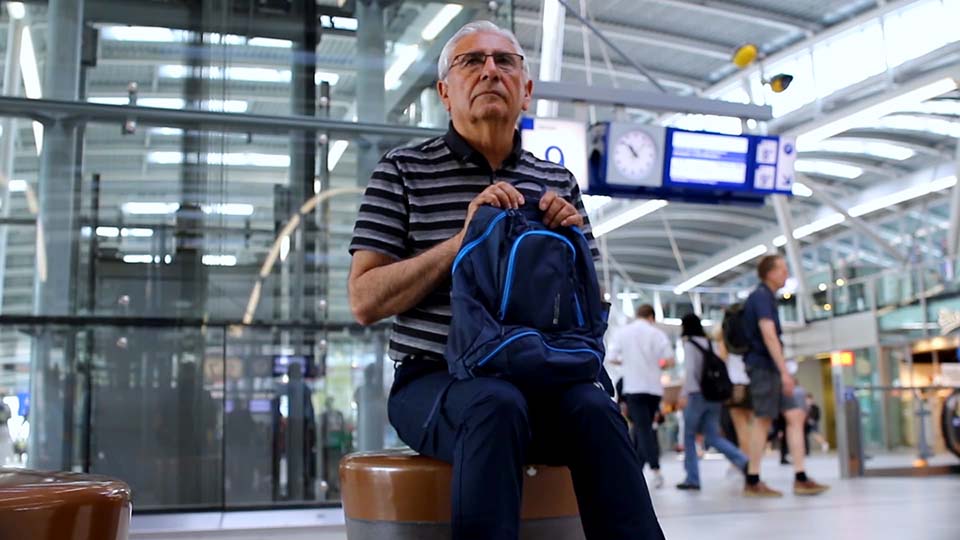
In Summer 2019, I was given the wonderful opportunity to shoot and manage post-production for an upcoming documentary with Abundant Life Church. Our subject was Bizhan Ussefi, a missionary who has dedicated his life to outreach in The Netherlands. We were limited to the use of existing equipment, but capturing a large amount of footage in a variety of shooting locations was paramount.
As an editor for over 25 years, I know that different projects require different editing methods. The larger a post-production house gets, the more thought must be put into the workflow of getting raw footage cut into something worth sharing. Many productions, such as documentaries, compile massive stores of footage. Without the right approach, audio and video can be difficult to sync, raw files can clog up a bin, and post-production can grind to a halt. Every project is unique, so I hadn’t encountered an issue like we had telling Ussefi’s story.

There were some serious restrictions on filming in certain locations, like churches and historical sites. We had few opportunities to set up a tripod or light our subjects with anything other than the sun. This increased the challenge, creating a need for mobile camera and lighting gear that could be deployed in a moment’s notice. In the end, we utilized a 2.7k GoPro Hero 4, a DJI Osmo Pocket, and a Canon 7D to capture footage and tell Ussefi’s story. The simplicity of the Osmo Pocket was a major bonus, as we planned to leave the camera with Ussefi so he and his son could continue making videos for outreach on social media.
We traveled around The Netherlands shooting interviews, footage, and b-roll for six straight days, capturing personal stories and examples of Ussefi’s work. We often traveled by train and bus, so we captured a lot of footage on board public transportation, inside busy stations, and in close proximity to one another. For this purpose, we used the Osmo Pocket’s integrated gimbal and a handheld Ronin-S gimbal for our Canon 7D.

The two missionaries traveling in the group, Bizhan and Ashkan Ussefi, were from Iran and primarily spoke Farsi. Each interview lasted much longer than normal due to the back-and-forth Farsi-English translations, which in turn created issues with some of our camera-generated files. We filmed the interviews with three cameras. Each camera recorded with a 4GB limit per file and created a new file when needed.

However, different cameras have different data rates, typically between 45 and 80 Mbits per second. This means that some interviews may have three files for one camera and five files for another. The Canon and GoPro each have a continuous timecode, but the Osmo Pocket begins each file at 00:00:00:00. We imported the multicam footage into DaVinci Resolve for the editing team to get started using Resolve’s multicam sync. Unfortunately, we ran into significant issues syncing the footage.

After switching to Avid Media Composer (where we were cutting some other footage), we had much more success with the multicam sync. Avid created a multicam workflow from the same original files, so post-production could continue without any tedious syncing. We then exported the approved cuts as AAF files to be imported back into DaVinci Resolve. Using an EVO shared storage server, AAF timelines automatically link to the original clips in Resolve.
Although using Avid Media Composer isn’t the only way to overcome multicam syncing issues, it’s likely using a program that is already owned by the editor. Software company Red Giant produces PluralEyes, an automated audio-video syncing program that offers quick solutions for $299.

We completed all the documentary post-production using an EVO shared storage server, which allowed us to keep all of our files in a centralized location. Documentary post-production teams working on similar productions can utilize the workflow capabilities of ShareBrowser, EVO’s media asset management software, to establish a collaborative post-production process. For example, one editor could open files in Avid Media Composer and begin syncing multicam media while, simultaneously, a colorist could begin their work in DaVinci Resolve with the exact same media files.
The best hardware and software for your team will likely depend on what type of production it’s being used for. That being said, the right method for your team’s workflow can drastically improve productivity and help you spend more time making creative decisions.
Greg Light is a Technical Support Engineer at Studio Network Solutions and has been an editor for 25 years. He has worked for ad agencies and post houses, notably with brands like Wal-Mart, Sonic Drive-In, and Gatorade.

